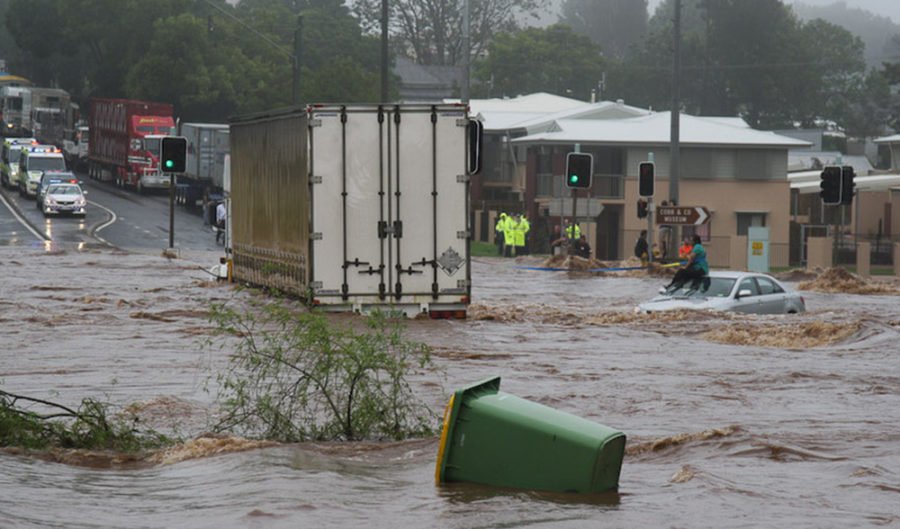Flood deaths are avoidable: don’t go in the water

THE FLOODING RAINS that drenched eastern Australia last June tragically left several people dead and several more missing in New South Wales and Tasmania. This is an all-too-common story – flooding rains are a major cause of deaths around the globe.
Since 1994, we have studied the trends and causes of deaths due to natural disasters. Recent research into flood fatalities in Australia from 1900 to 2015 is revealing some important insights.
Our research suggests many of these deaths are avoidable.
SEE ALSO: Aussies refuse to flood-proof homes
How people die in floods
Since 1900, 1859 people in Australia have died in floods. That’s more than in bushfires and earthquakes, but less than heatwaves, which remain by far Australia’s most deadly natural peril (excluding pandemic diseases). Of these flood deaths, 178 have occurred since 2000.
The majority of deaths have been male (79%), although the proportion of females has increased since the 1960s. Children and adults younger than 29 make up the majority.
Overall, most deaths have occurred in New South Wales and Queensland, although a greater proportion of people die in the Northern Territory compared to the population. Most deaths happen in relative isolation, in flood events that claim either one or two lives.
Most people have died while attempting to cross a bridge, causeway, culvert or road, either on foot or in a vehicle. While most victims were capable of independent action and aware of the flood, the speed and depth of the water took them by surprise.
Of those who were attempting to reach a destination at the time of death, the greatest number were on their way home. Playing in flood water is also a significant cause of death, particularly for children and young adults. More women and children died in floods due to the decisions of others – for example, being a passenger in a vehicle.
Those on foot mostly perished during the daytime, whereas those in vehicles were more likely to die in the evening when visibility is poorer. The majority of fatalities happened within the local area close to where they lived.
Overall, flood deaths have been declining since the early 1960s. This is probably due to investments in flood mitigation and warning systems, and the work of emergency service organisations such as the State Emergency Services. Deaths associated with motor vehicles, however, are on the rise and those associated with four-wheel-drive vehicles have increased over the past 15 years. The large majority of drivers have been men.
Our research has shown that many people simply ignore warnings and road closure signs. In one case in 2015 in NSW, 84% of motorists were observed driving past road closure signs and entering flood waters. Most were men driving four-wheel-drive vehicles.
How can we prepare people?
Our unpublished survey has revealed that Australian emergency managers prefer improving roadside warning signage at causeways, flood warning systems and road design in flood-prone areas.
However, it is clear that current practices are failing and must be complemented with a strategy to inspire behavioural change in the community.
Education programs should be targeted at young males at risk of entering floodwater, and at females and children to raise their awareness so that they may be empowered to influence motorist behaviour.
It is too easy to underestimate the dangers associated with floods. Our vehicles, even four-wheel-drives, do not provide a safe means of crossing flooded roadways. The public must understand that flood waters need to be respected, and be ready to work with authorities to reduce risks posed by flooding to our towns and cities.
See here for the full research report.
![]()
Katharine Haynes, Snr Research Fellow, Risk Frontiers Natural Hazards Research Centre and Andrew Gissing, Director Enterprise Risk Management
This article was originally published on The Conversation. Read the original article.
READ MORE:
- Floods: 10 of the deadliest in Australia’s history
- Mass spider webs cover flood-affected areas
- Personal perspective: inside the 2011 Brisbane flood clean up

